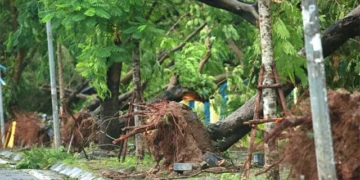A groundbreaking tool developed by the University of California (UC) in Berkeley could assist scientists in distinguishing extraterrestrial messages from the chaotic array of radio signals transmitted to Earth.
According to SciTech Daily, the tool, named Breakthrough Listen, is expected to be a significant advancement, greatly enhancing human confidence in the search for ways to connect with extraterrestrial residents.

It is a new technique used as a power-boosting tool for super radio telescopes. – Photo: SCITECH DAILY
Breakthrough Listen is a technique that can be integrated into various telescopes, allowing for a detailed examination of how radio signals travel through the stellar space, effectively eliminating signals that are merely noise generated by our own radio waves.
This technique will be applied in a project of the same name and is part of the SETI project (Search for Extraterrestrial Intelligence), the most comprehensive effort of its kind to date.
Scientists will monitor the Northern and Southern skies using powerful radio telescopes owned by the U.S. and its partners, filtering out noise signals to identify signs of extraterrestrial technology.
The project will also focus on thousands of individual stars that have previously been noted in the Milky Way Galaxy, considered the most promising direction for the existence of a sufficiently advanced civilization capable of sending radio signals.
One of the “treasures” anticipated to be “unearthed” in this new project is the famous 72-second narrowband signal captured by a telescope in Ohio, USA, in 1977.
Despite the technology at that time being very primitive compared to today, the signal clearly could not have been produced by any natural astrophysical process. Scientists wrote the word “Wow!” in red ink right on the data printout.
In a publication in The Astrophysical Journal, the UC Berkeley research team, along with collaborators from Cornell University and the SETI Institute, stated that Breakthrough Listen is intended to be integrated into leading facilities that have previously detected extraterrestrial radio signals, such as the Green Bank Telescope located in West Virginia and the MeerKAT telescope array in South Africa.


















































